According to numbers published in July 2023 by UFOP (the German Union for the Promotion of Oil and Protein Plants), the 27 member states of the European Union (EU-27) imported just under four million tons of palm oil from July 2022 to the end of June 2023.
That is around 934,000 tons, or 19 % less than in the previous year. By contrast, Germany imported significantly more palm oil from abroad. At 359,000 metric tons in 2022/23, it was almost a quarter more than in the previous year.
So, although Germany leads the way in the European environmental debate and in January 2023 pre-emptively already phased out palm oil in biodiesel, it went on to purchase more of the golden oil.
How come?
The German market for palm oil
Within the EU, Germany is a heavyweight. With 19 % of the Union´s population, its share of the combined EU-27 GDP (gross domestic product) is a full 25 %.
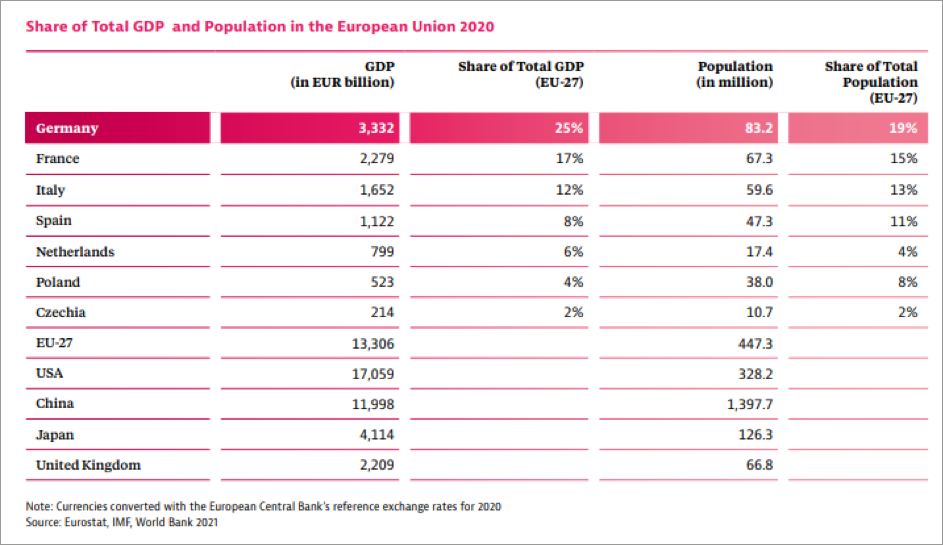
Given the country´s size, Germany´s palm oil imports significantly impact EU figures overall. Luckily for palm oil exporters, the German import volume started to turn around in 2021 after dropping for years.
Total German Palm Oil Imports (´000 MT)
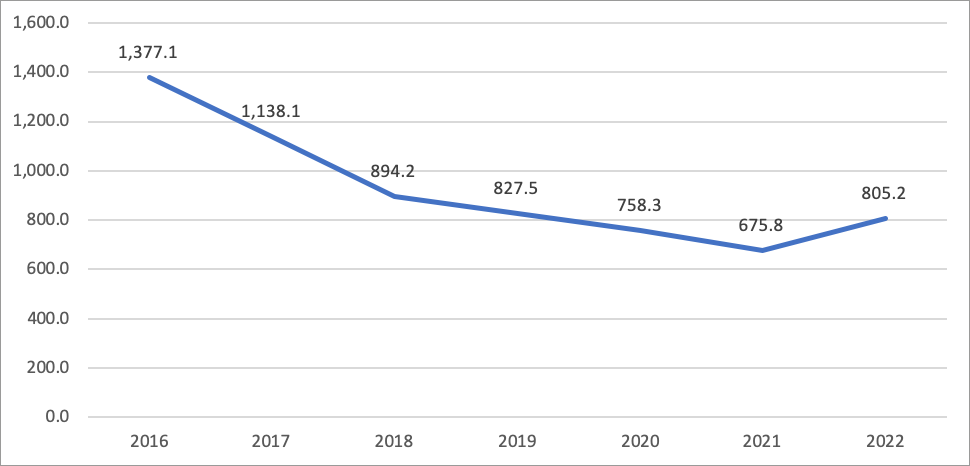
And specifically for Malaysia, there is more good news: first, in stark contrast to Indonesia, Malaysia´s share of the total suffered far less. Since 2017, Malaysia consistently exported significantly more palm oil to Germany than any other country. And between 2021 and 2022 the volume grew by an impressive 45 %. That year, Malaysia sold 90 thousand MT more to Germany than the runner-up Indonesia.
German Palm Oil Imports – shares of the five largest exporters (´000 MT)
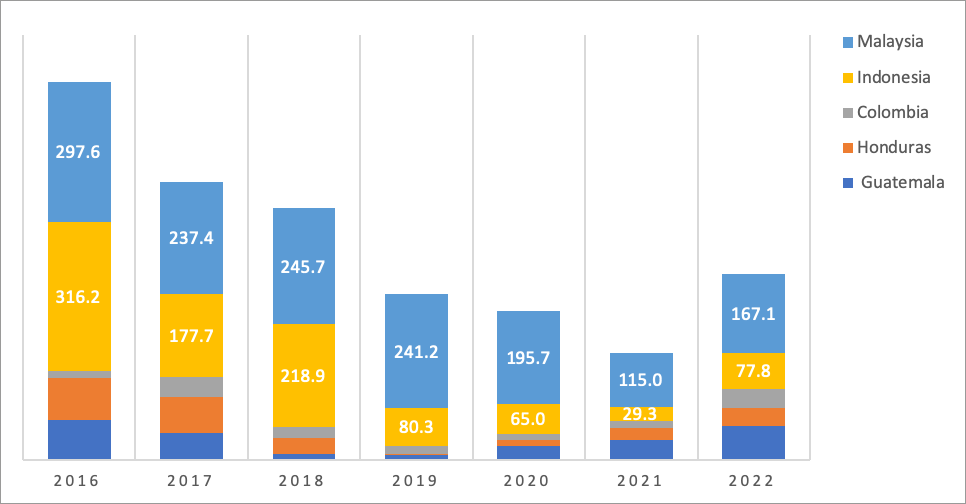
And, as mentioned in the introduction to this article, early figures for 2023 indicate that the positive trend continues. What are possible explanations?
Consumption patterns
The structure of German palm oil consumption is hard to track. The commodity falls into numerous products aside from crude oil. In addition, a large chunk of the palm oil plus derivatives enters Germany as a component of final and intermediate products.
The latest figures available for Germany are from 2019 and provide the following picture: out of a total of over 1.2 million metric tons (MT) consumed, more than half went to the energy sector. And there, almost all of it went into biofuels.
Figure 3 Consumption per sector of total palm oil imports 2019
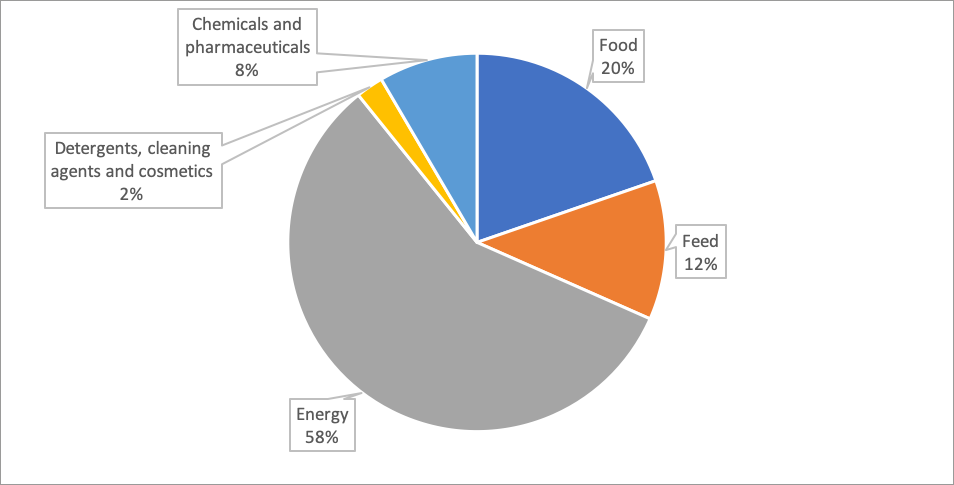
Given that consumption pattern (and assuming the relative positions have not changed much over the past three years), one possible explanation for the growing import volumes of palm oil might be more demand for biofuels. However, from January 2023 onwards, Germany effectively banned the use of palm oil biofuels.
The United States Department of Agriculture writes in a study on the subject:
“However, the bans only affect the eligibility for counting against mandates (i.e., consumption) and not production. Therefore, palm oil-based HDRD/PME[1] can still be produced in member states with a ban but will have to be exported either to another member state market or outside the EU. As a result, the effect on the EU feedstock mix will only be felt when more countries apply such bans.” (Source: USDA, Biofuels Annual, July 12, 2022)
So, this re-directing of trade flows may be one explanation. Another may lie in the arcane provisions of numerous renewable energy rules in the EU and Germany. Although the days of palm oil proper to produce biodiesel the traditional way (in the form of fatty acid methyl ester, or FAME) may be numbered, there are several possible reincarnations of the golden oil in biofuels.
One is a new generation of so-called “renewable diesel” (which is a sub-species of HVO). Under EU rules, such a biofuel can be produced when using “palm residues”, such as palm fatty acid distillate, or PFAD.
Some EU member states consider PFAD not a residue, but a by-product. In others, it can be used in line with sustainability requirements, which is why Finland´s Neste, the world’s largest producer of renewable jet fuel and renewable diesel, banks heavily on PFAD. The latest numbers from Malaysian PFAD exports seem to confirm that observation.
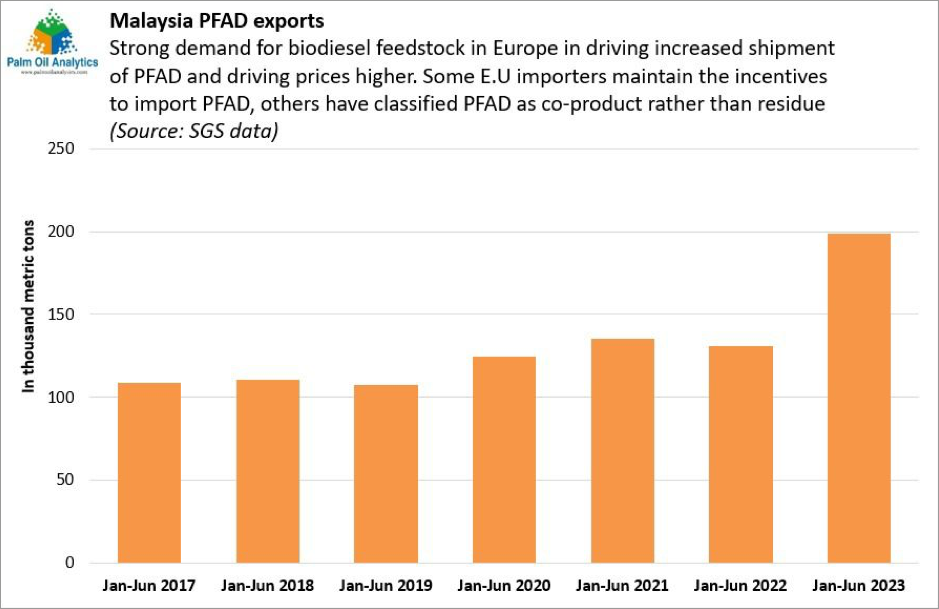
The German biodiesel industry is the market leader in the EU and there may be other venues for the Malaysian palm oil industry. For example, the infamous Renewable Energy Directive (RED) allows what it calls advanced biofuels, which may be produced, among other things, using empty fruit bunches or palm oil mill effluent (POME).
And, finally: Germany probably also purchased more palm oil because the HORECA sector (hotels, restaurants, cafés/catering) recovered once the Covid-19 pandemic was over.
Outlook: Life (and palm oil) finds a way
Observing the fate of palm oil in Europe over the years, one is reminded of the word actor Jeff Goldblum utters in awe in the classic movie Jurassic Park when contemplating the resilience of nature. “Life finds a way”.
By analogy, it seems that palm oil will always find a way to emerge from the shadows when least expected. When the EU some years back decided it needed to cut down on CO2 emissions from fossil fuels and introduced biofuels, palm oil rose to the occasion.
Likewise, when Russia and Ukraine conflict began and sunflower oil supplies dried up, palm oil was there.
Now the e-revolution in Europe´s transport sector is slow in coming, especially in Germany with its large car manufacturers still clinging to the combustion engine. Biofuels for the near to midterm future will be essential as a bridge technology to help the EU reach its environmental targets.
In Germany, most of the biofuels are made from rapeseed (around 60 %). But the headwinds are strong. Not only did the German Ministry of the Environment – much to the chagrin of the biofuels lobby – recently propose to outlaw biofuels. Also, the “food vs. fuel” debate has not died down and the EU with its Green Deal is throwing wrenches in rapeseed and biomass production.
So, palm oil in its multiple disguises might be set to ride to the rescue one more time. True, as the age of the fuel-based engine is slowly fading into oblivion, giving way to electrified vehicles, at least in the realm of energy this might be palm oil´s last stance. But for Malaysian producers today all this means is that the time to give up on Germany (or the EU, for that matter), has not yet arrived.
Prepared by Uthaya Kumar
MPOC Brussels
*Disclaimer: This document has been prepared based on information from sources believed to be reliable but we do not make any representations as to its accuracy. This document is for information only and opinion expressed may be subject to change without notice and we will not accept any responsibility and shall not be held responsible for any loss or damage arising from or in respect of any use or misuse or reliance on the contents. We reserve our right to delete or edit any information on this site at any time at our absolute discretion without giving any prior notice.
[1] HRDR: hydrogenation derived renewable diesel (also known originally as hydrogenated vegetable oil or HVO)
PME: palm oil based methyl ester biodiesel

